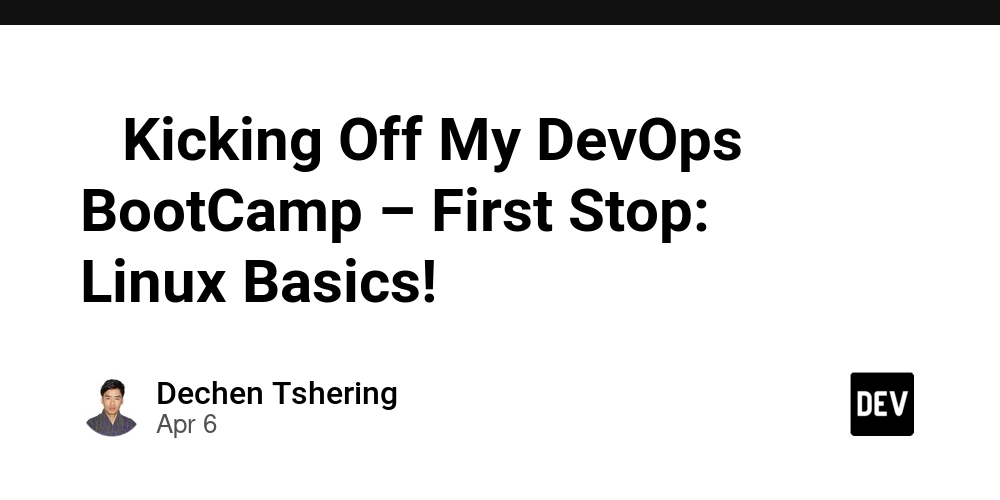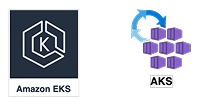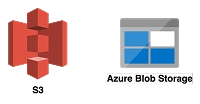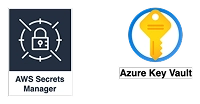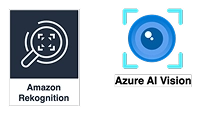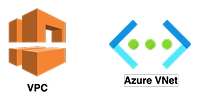Getting Started with Azure for AWS Professionals: A Quick Guide
Introduction When I started my current job, I had extensive experience with AWS but had never worked with Azure before. It wasn’t easy to get started, and I felt a bit lost navigating a new cloud platform. Mapping AWS services to their Azure equivalents helped me get up to speed. Once I saw the similarities and understood the key differences, I became more comfortable working with Azure. This guide is designed to help you do the same, quickly grasp Azure by relating it to your existing AWS knowledge. We’ll cover the most commonly used services and map them directly to what you already know, highlighting key differences and practical tips to make your transition smoother. 1. Compute: From EC2 to Virtual Machines In AWS, you probably use EC2 for virtual server instances. In Azure, the equivalent is Virtual Machines (VMs). AWS (EC2) Azure (Virtual Machines) Key Differences EC2 Instances Virtual Machines (VMs) Azure VMs do offer integrated support for Windows workloads, aligning with Microsoft's ecosystem. AMI (Amazon Machine Image) Azure Images Images are created and managed differently. Auto Scaling Virtual Machine Scale Sets (VMSS) VMSS is Azure’s native scaling service. Quick Tip: Azure VMs require you to specify a Resource Group during creation. Read more 2. Serverless Computing: From Lambda to Azure Functions AWS (Lambda) Azure (Functions) Key Differences Lambda Functions Azure Functions Similar in concept, but Azure supports multiple triggers natively. AWS Step Functions Logic Apps Step Functions focus on stateful orchestration, while Logic Apps are event-driven and connector-based. Quick Tip: Logic Apps are more suited for business process automation and integrating with SaaS applications, while Step Functions excel at orchestrating microservices and serverless functions. 3. Containers and Orchestration: AWS Fargate for ECS, EKS to AKS, ACI If you’ve worked with AWS Fargate or EKS, Azure offers AKS (Azure Kubernetes Service) and ACI (Azure Container Instances). AWS (ECS/EKS) Azure (AKS/ACI) Key Differences EKS (Elastic Kubernetes Service) AKS (Azure Kubernetes Service) AKS is fully managed and integrates with Azure AD for identity management. AWS Fargate ACI (Azure Container Instances) Both are serverless container options. ACI is more suited for standalone containers, while Fargate works with ECS or EKS. Quick Tip: Use Azure Container Registry (ACR), similar to Amazon ECR, for storing and managing container images. 4. Storage: From S3 to Blob Storage (Including Tiers) Azure’s Blob Storage is similar to S3, but storage tiers differ slightly. AWS (S3) Azure (Blob Storage) Key Differences S3 Buckets Blob Containers Similar structure but different tiering. Standard Hot Similar performance and cost for frequent access. Intelligent-Tiering Cool Lower cost for infrequent access. Glacier/Deep Archive Archive For long-term, rarely accessed data. Quick Tip: Azure Blob Storage supports Immutable Blobs for data protection, similar to S3 Object Lock. 5. Identity and Secrets: From IAM, PCA, Secrets Manager to Azure AD, Key Vault Managing credentials and identity is crucial. Azure’s approach is slightly different but offers similar services. AWS (IAM, PCA, Secrets Manager) Azure (AD, Key Vault) Key Differences IAM (Identity and Access Management) Azure AD (Active Directory) Azure AD has built-in SSO and enterprise identity management. Secrets Manager Azure Key Vault Both store secrets, but Key Vault also handles certificates. Amazon Certificate Manager (ACM) Azure Key Vault Certificates Manages TLS/SSL certificates. Private Certificate Authority (PCA) Azure Key Vault Certificate Management Key Vault supports issuing and managing private certificates. Quick Tip: Use Managed Identities in Azure to avoid managing secrets directly, similar to IAM roles in AWS. Azure AD's functionalities extend beyond those of AWS IAM, encompassing broader identity management features. 6. Messaging and Event Handling: From SQS, SNS, EventBridge to Service Bus, Event Grid Azure provides comparable services for messaging and event-driven architectures. AWS (SQS, SNS, EventBridge) Azure (Service Bus, Event Grid) Key Differences SQS (Simple Queue Service) Service Bus Queues Service Bus supports more advanced messaging patterns. SNS (Simple Notification Service) Service Bus Topics Topics in Service Bus support subscriptions and filters. EventBridge Event Grid Event Grid is more integrated with Azure services. Quick Tip: Use Azure Logic Apps to build workflows that react to events, similar to AWS Step Functions. 7. API Gateway: From AWS API Gateway to Azure API Management (APIM) AWS (API Gateway) Azure (APIM) Key Differences API Gateway API Management (APIM) APIM supports versioning, throttling, and transformatio
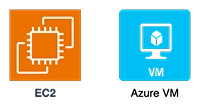
Introduction
When I started my current job, I had extensive experience with AWS but had never worked with Azure before. It wasn’t easy to get started, and I felt a bit lost navigating a new cloud platform. Mapping AWS services to their Azure equivalents helped me get up to speed. Once I saw the similarities and understood the key differences, I became more comfortable working with Azure.
This guide is designed to help you do the same, quickly grasp Azure by relating it to your existing AWS knowledge. We’ll cover the most commonly used services and map them directly to what you already know, highlighting key differences and practical tips to make your transition smoother.
1. Compute: From EC2 to Virtual Machines
In AWS, you probably use EC2 for virtual server instances. In Azure, the equivalent is Virtual Machines (VMs).
| AWS (EC2) | Azure (Virtual Machines) | Key Differences |
|---|---|---|
| EC2 Instances | Virtual Machines (VMs) | Azure VMs do offer integrated support for Windows workloads, aligning with Microsoft's ecosystem. |
| AMI (Amazon Machine Image) | Azure Images | Images are created and managed differently. |
| Auto Scaling | Virtual Machine Scale Sets (VMSS) | VMSS is Azure’s native scaling service. |
Quick Tip: Azure VMs require you to specify a Resource Group during creation.
2. Serverless Computing: From Lambda to Azure Functions
| AWS (Lambda) | Azure (Functions) | Key Differences |
|---|---|---|
| Lambda Functions | Azure Functions | Similar in concept, but Azure supports multiple triggers natively. |
| AWS Step Functions | Logic Apps | Step Functions focus on stateful orchestration, while Logic Apps are event-driven and connector-based. |
Quick Tip: Logic Apps are more suited for business process automation and integrating with SaaS applications, while Step Functions excel at orchestrating microservices and serverless functions.
3. Containers and Orchestration: AWS Fargate for ECS, EKS to AKS, ACI
If you’ve worked with AWS Fargate or EKS, Azure offers AKS (Azure Kubernetes Service) and ACI (Azure Container Instances).
| AWS (ECS/EKS) | Azure (AKS/ACI) | Key Differences |
|---|---|---|
| EKS (Elastic Kubernetes Service) | AKS (Azure Kubernetes Service) | AKS is fully managed and integrates with Azure AD for identity management. |
| AWS Fargate | ACI (Azure Container Instances) | Both are serverless container options. ACI is more suited for standalone containers, while Fargate works with ECS or EKS. |
Quick Tip: Use Azure Container Registry (ACR), similar to Amazon ECR, for storing and managing container images.
4. Storage: From S3 to Blob Storage (Including Tiers)
Azure’s Blob Storage is similar to S3, but storage tiers differ slightly.
| AWS (S3) | Azure (Blob Storage) | Key Differences |
|---|---|---|
| S3 Buckets | Blob Containers | Similar structure but different tiering. |
| Standard | Hot | Similar performance and cost for frequent access. |
| Intelligent-Tiering | Cool | Lower cost for infrequent access. |
| Glacier/Deep Archive | Archive | For long-term, rarely accessed data. |
Quick Tip: Azure Blob Storage supports Immutable Blobs for data protection, similar to S3 Object Lock.
5. Identity and Secrets: From IAM, PCA, Secrets Manager to Azure AD, Key Vault
Managing credentials and identity is crucial. Azure’s approach is slightly different but offers similar services.
| AWS (IAM, PCA, Secrets Manager) | Azure (AD, Key Vault) | Key Differences |
|---|---|---|
| IAM (Identity and Access Management) | Azure AD (Active Directory) | Azure AD has built-in SSO and enterprise identity management. |
| Secrets Manager | Azure Key Vault | Both store secrets, but Key Vault also handles certificates. |
| Amazon Certificate Manager (ACM) | Azure Key Vault Certificates | Manages TLS/SSL certificates. |
| Private Certificate Authority (PCA) | Azure Key Vault Certificate Management | Key Vault supports issuing and managing private certificates. |
Quick Tip: Use Managed Identities in Azure to avoid managing secrets directly, similar to IAM roles in AWS. Azure AD's functionalities extend beyond those of AWS IAM, encompassing broader identity management features.
6. Messaging and Event Handling: From SQS, SNS, EventBridge to Service Bus, Event Grid
Azure provides comparable services for messaging and event-driven architectures.
| AWS (SQS, SNS, EventBridge) | Azure (Service Bus, Event Grid) | Key Differences |
|---|---|---|
| SQS (Simple Queue Service) | Service Bus Queues | Service Bus supports more advanced messaging patterns. |
| SNS (Simple Notification Service) | Service Bus Topics | Topics in Service Bus support subscriptions and filters. |
| EventBridge | Event Grid | Event Grid is more integrated with Azure services. |
Quick Tip: Use Azure Logic Apps to build workflows that react to events, similar to AWS Step Functions.
7. API Gateway: From AWS API Gateway to Azure API Management (APIM)
| AWS (API Gateway) | Azure (APIM) | Key Differences |
|---|---|---|
| API Gateway | API Management (APIM) | APIM supports versioning, throttling, and transformation out of the box. |
| Lambda Integration | Function App Integration | Similar serverless backend support. |
Quick Tip: Azure’s APIM developer portal is more "built-in" and ready to use out of the box compared to AWS API Gateway, which requires manual deployment and configuration of a developer portal.
8. DNS and CDN: From Route 53 and CloudFront to Azure DNS and CDN
| AWS (Route 53, CloudFront) | Azure (DNS, CDN) | Key Differences |
|---|---|---|
| Route 53 | Azure DNS | Route 53 provides DNS name management and DNS-level traffic routing and failover services. |
| CloudFront | Azure CDN | CloudFront offers Lambda@Edge, while Azure CDN integrates with Front Door. |
Quick Tip: Azure CDN supports integration with Azure Front Door for application acceleration and global load balancing. In Azure, Azure DNS provides domain and DNS management while Traffic Manager provides DNS-level traffic routing, load balancing, and failover capabilities.
9. AI and Machine Learning: From SageMaker to Azure Machine Learning
| AWS (SageMaker) | Azure (Machine Learning) | Key Differences |
|---|---|---|
| SageMaker Notebooks | Azure Machine Learning Notebooks | Both provide Jupyter-based environments. |
| SageMaker Models | Azure Models | Azure ML integrates tightly with Azure DevOps for CI/CD. |
| Comprehend | Text Analytics | Similar NLP capabilities. |
| Rekognition | Computer Vision | Azure offers pre-trained and customizable models. |
Quick Tip: Azure has a broader set of cognitive services for vision, speech, and language, similar to AWS AI services.
10. Database Services: From RDS, DynamoDB, Aurora to Azure SQL, Cosmos DB
AWS and Azure both offer a wide array of database services, but their approach and feature sets differ. AWS provides managed relational and NoSQL databases through services like RDS, DynamoDB, and Aurora. Azure offers similar capabilities through Azure SQL Database, Cosmos DB, and other data services.
| AWS (RDS, DynamoDB, Aurora) | Azure (SQL Database, Cosmos DB) | Key Differences |
|---|---|---|
| RDS (Relational Database Service) | Azure SQL Database | RDS supports multiple engines, while Azure SQL focuses on SQL Server compatibility. |
| Aurora. | SQL Managed Instance. | Aurora offers MySQL and PostgreSQL compatibility, while SQL MI offers full SQL Server support. |
| DynamoDB. | Cosmos DB. | Cosmos DB provides multi-model support, including SQL, MongoDB, Cassandra, and Graph APIs. |
| Redshift | Azure Synapse Analytics | Redshift focuses on data warehousing, while Synapse integrates data lakes and big data processing. |
| ElastiCache | Azure Cache for Redis | Both provide in-memory caching but differ in their integration with other cloud services. |
Quick Tip: Choose Cosmos DB for multi-region, globally distributed apps, and Azure SQL Database for SQL Server workloads that need high availability and scaling.
11. Networking: From VPC to VNet
Networking is a critical aspect of both AWS and Azure, providing foundational services for connecting and managing resources.
| AWS (VPC) | Azure (VNet) | Key Differences |
|---|---|---|
| VPC (Virtual Private Cloud) | VNet (Virtual Network) | Both provide isolated networks, but VNet natively integrates with Azure services. |
| Direct Connect | ExpressRoute | Both provide private, high-speed connectivity, but pricing and integration vary. |
| Transit Gateway | Virtual WAN | Transit Gateway connects VPCs, while Virtual WAN provides a centralized networking hub. |
Quick Tip: Use Azure Bastion for secure RDP and SSH connectivity to VMs without exposing them to the public internet.
Conclusion
Transitioning from AWS to Azure doesn’t have to be overwhelming. By understanding how key services map to each other, you can quickly become proficient with Azure. Focus on familiar concepts, explore the Azure Portal and CLI, and practice building simple setups to get hands-on experience. Whether it’s compute, storage, AI, or serverless, Azure has the tools to match your AWS expertise.
Would you like more deep dives into specific services or practical migration tips? Let me know!











